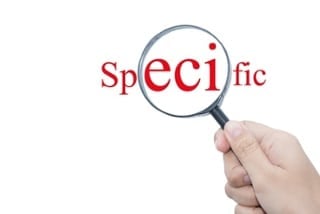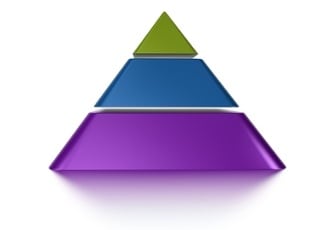As an instructional designer developing higher education courses, we need to look at the big picture. How do the courses in higher education build a pathway for students and how will students proceed through the requirements of their academic programs? How do you build objectives for a course to ensure they meet the objectives of the overall program? Is every course within an academic program going to be taken? If not, how do we ensure students are gaining enough knowledge from the program to be successful in the workforce?
Three Tiers of Courses
There are typically three tiers of courses required for an academic program.
- The first tier of the academic program will contain many introductory courses. These are the general courses required by many different programs, such as college english or mathematics. These introductory courses help develop students into well-rounded scholars.
- The second tier in an academic program are intermediate courses that are typically more aligned with the program. They are the foundations or building blocks needed to be successful with the more advanced courses in the program. Examples of intermediate courses for an economics program might include macroeconomics or basic statistics.
- The third tier are the advanced courses. Typically the most rigorous in the program, these courses require the most dedication to the field and usually provide the student with practical applications that will be used on the job. These courses may have many labs, hands-on applications, and/or co-op opportunities students need to be successful in the desired career.
Broad vs. Specific Objectives
Each academic program has objectives that students should be able to meet by the end of the program. The courses in the program also have objectives that students should be able to meet by the end of the course. The specific objectives for each course help students meet the overall objectives for the program.

Here is an example:
Broad Marketing Program Objective:
Students will be able to understand the contributions of marketing to a business enterprise.
Specific Marketing Course Objectives:
By the end of this course students should be able to:
- Identify the role of marketing within a firm’s decision-making process
- Provide a process for analyzing, segmenting, and targeting customers in a consumer and business market
- Describe the process of product development and brand positioning
- List and describe the common models of distribution and retailing
- Develop various promotional tactics such as advertising, public relations, direct marketing, sales promotions, and personal selling
Notice that the program objective is very broad and will take a great deal of understanding to accomplish. The course objectives are very specific, demanding that students show a specific skill to meet the program’s overall goal. By the end of the marketing program, students should be able to use the knowledge learned in the various courses to achieve the broad objective.

There are ALWAYS Choices
Not all courses offered in an academic program are required courses. Most academic programs allow students to have options as to which concentration within a field they would like to pursue. A biology student may wish to take a course on animal behavior rather than a course on plants and people. Giving students options in the advanced courses allows each student to build an academic program better tailored to their future career and interests.




